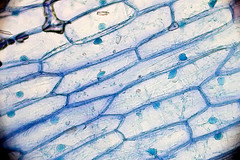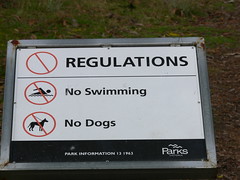| 5762862730 | Osmosis | Diffusion of water across a membrane through the lipid bilayer |  | 0 |
| 5762862731 | Hypertonic | Having greater concentration of solute inside than the solution outside. Cell shrinks. |  | 1 |
| 5762862732 | Hypotonic | Having a lower concentration of solute inside than the solution outside. Cell Expands. |  | 2 |
| 5762862733 | Isotonic | Having an equal solute concentration inside and outside the cell. Ideal (perfect) conditions. Cell remains normal. |  | 3 |
| 5762862734 | Vacuole | Storage vesicle for water, food, wastes other substances. 1 large vacuole in plants, many small vacuoles in animals. |  | 4 |
| 5762862735 | Nucleus | Controls all cell activities and protein production. Contains the DNA and nucleolus. |  | 5 |
| 5762862736 | Cytoplasm/Cytosol | Cell liquid in which chemical reactions occur. Holds and cushions the organelles. |  | 6 |
| 5762862737 | Mitochondria | Converts glucose into ATP (energy a cell can use) in the process of cellular respiration. |  | 7 |
| 5762862738 | Cell/Plasma/Lipid Membrane | A double-layered lipid membrane that surrounds the cell. Regulates what enters and leaves the cell. |  | 8 |
| 5762862739 | Cell Wall | Rigid external layer of a plant cell (cellulose), bacteria (glycoproteins), or fungi (chitin) that is outside the cell membrane. |  | 9 |
| 5762862740 | Chloroplast | Converts light energy into glucose in the process of photosynthesis. Contains chlorophyll giving plants their green color. |  | 10 |
| 5762862741 | Endoplasmic Reticulum | Passageways where compounds are manufactured, processed, and transported. |  | 11 |
| 5762862742 | Golgi Apparatus/Body/Complex | Collects, modifies, and packages proteins and lipids made by the E.R. |  | 12 |
| 5762862743 | Prokaryote | Unicellular. Lacks a nucleus and membrane bound organelles. Has ribosomes. |  | 13 |
| 5762862744 | Eukaryote | Unicellular or multicellular. Contains a nucleus and membrane bound organelles. Has ribosomes. |  | 14 |
| 5762862745 | Diffusion | The movement of particles from an area of high concentration to an area of low concentration. |  | 15 |
| 5762862746 | Equilibrium / Homeostasis | A state of balance in which there is little or no total change. |  | 16 |
| 5762862747 | Lysosome | Contains digestive enzymes to breakdown food and wastes. Involved in apoptosis. |  | 17 |
| 5762862748 | Nucleolus | Synthesizes ribosomes. Found in the nucleus. |  | 18 |
| 5762862749 | Vesicle | Small package of nutrients, proteins, wastes, or water created by the golgi. |  | 19 |
| 5762862808 | Cell | The basic unit of all living things. The smallest unit of life. |  | 20 |
| 5762862809 | Organism | A complete living thing |  | 21 |
| 5762862810 | Ribosome | Synthesizes proteins. Mostly found on the rough E.R. but can also be in the cytoplasm. |  | 22 |
| 5762862811 | Tissue | A collection of similar cells that perform a specific job. |  | 23 |
| 5762862812 | Unicellular | Made of a single cell |  | 24 |
| 5762862813 | Light Microscope | Basic microscope that uses light and mirrors to magnify small objects. |  | 25 |
| 5762862814 | Specialization | Cells that do only one special job. |  | 26 |
| 5762862815 | Cell Division | Cell splitting into two new cells. |  | 27 |
| 5762862816 | Multi-cellular | Made of more than one cell. |  | 28 |
| 5762862750 | Nuclear membrane/envelope | Surrounds the nucleolus and DNA. Controls what enters and leaves the nucleus. |  | 29 |
| 5762862751 | Apoptosis | Programmed cell death/suicide (by lysozomes) when a cell can't repaired, has died, or may cause problems like cancer. |  | 30 |
| 5762862752 | Smooth Endoplasmic Reticulum | Synthesizes lipids for use in the cell membrane and other parts of the cell. |  | 31 |
| 5762862753 | Rough Endoplasmic Reticulum | Contains most of the cells ribosomes which synthesize proteins. |  | 32 |
| 5762862754 | Synthesize | To make |  | 33 |
| 5762862755 | Organelle | "Little organs" that make up the cell working together for the survival and function of the cell. |  | 34 |
| 5762862756 | Lack(s) | Missing, does not have. |  | 35 |
| 5762862757 | Unicellular | Made of 1 cell. |  | 36 |
| 5762862758 | Electron Microscope | Uses accelerated electrons to illuminate (light up) very small objects. |  | 37 |
| 5762862759 | Anton von Leeuwenhoek | Inventor of the first microscopes. 1600's. |  | 38 |
| 5762862760 | Robert Hooke | Gave cells their name (cells). 1600's. |  | 39 |
| 5762862761 | Robert Brown | Discovered the importance of the cell nucleus. 1800's. |  | 40 |
| 5762862762 | Matthias Schleiden | Botatnist (studied plants) who said all plants are made of cells.. Worked on cell theory with Dr. Schwann. 1800's. |  | 41 |
| 5762862763 | Theodore Schwann. | Physiologist (studied animal cells) who said all animals are made of cells. Worked on cell theory with Dr. Schleiden. 1800's. |  | 42 |
| 5762862764 | Cell Theory | 1. All living organisms are composed of one or more cells. 2. The cell is the basic unit of structure and organization in organisms. 3. Cells arise from pre-existing cells. |  | 43 |
| 5762862765 | Cilia | Small hairs on a cells surface that wave back and forth allowing the cell to move. |  | 44 |
| 5762862766 | Flagella | A whip-like structure on a cell that 'whips' back and forth allowing the cell to move (e.g. sperm cell). |  | 45 |
| 5762862767 | Pseudopod | "False foot". An extension of the cell to 'pull' the cell forward (move) or pull an object to the cell. |  | 46 |
| 5762862768 | Active Transport | Movement of particles from low to high concentration across the membrane that requires energy (ATP). |  | 47 |
| 5762862769 | Passive Transport | Movement of particles from high to low concentration across the membrane (no energy needed). |  | 48 |
| 5762862770 | Facilitated Diffusion | Passive transport through the membrane with the use of protein channels. Some channels are specific while others are not. |  | 49 |
| 5762862771 | Centriole | Helps align chromosomes during cell division (animal cells only). |  | 50 |
| 5762862772 | Microtubules/Microfilaments | Small, thin proteins that help support and give structure to a cell. A cells cytoskeleton. |  | 51 |
| 5762862773 | Cyto- | Prefix meaning cell. |  | 52 |
| 5762862774 | Phospholipid Membrane | Cell membrane composed of phospholipids, proteins (transport), cholesterol, and aquaporins.. |  | 53 |
| 5762862775 | Pore | A small opening (hole) to allow materials to pass in and out of an area. |  | 54 |
| 5762862776 | Porous | Allows materials to pass through. |  | 55 |
| 5762862777 | Passive | No energy needed to allow material passage. |  | 56 |
| 5762862778 | Aquaporin | Protein channels in the cell membrane that allow for quick water passage. |  | 57 |
| 5762862779 | Regulate | Control. |  | 58 |
| 5762862780 | Hydrophilic | Attracted to water. |  | 59 |
| 5762862781 | Hydrophobic | Repelled by water. |  | 60 |
| 5762862782 | Modify | Change / Convert |  | 61 |
| 5762862783 | Plant Cell | 1 large vacuole. Chloroplasts Cell wall (cellulose) |  | 62 |
| 5762862784 | Animal Cell | Many small vacuoles Cell membrane only Centrioles Lysosomes |  | 63 |
| 5762862785 | Phospholipid | Makes up the cell membrane. Composed of a phosphate 'head' (hydrophilic) and 2 fatty acid 'tails' (hydrophobic). |  | 64 |
| 5762862786 | Semi-permeable | Allows some materials (not all) to pass through. |  | 65 |
| 5762862787 | Selective permeability | The ability to decide which particles enter and leave a cell. |  | 66 |
| 5762862788 | External / Exo- | Outside (e.g. exoskeleton of an insect) |  | 67 |
| 5762862789 | Internal / Endo- | Inside (e.g. endoskeleton of humans) |  | 68 |
| 5762862790 | Macro- | Large |  | 69 |
| 5762862791 | Micro- | Small |  | 70 |
| 5762862792 | Cholesterol | Stiff sterol lipid in the cell membrane that provides strength and rigidity. |  | 71 |
| 5762862793 | Concentration | The amount of dissolved solute in a solvent. Usually expressed as a percent. |  | 72 |
| 5762862794 | Solution | Solute + solvent |  | 73 |
| 5762862795 | Solute | Particles dissolved in a liquid (solvent) |  | 74 |
| 5762862796 | Solvent | A liquid particles (solute) are dissolved in |  | 75 |
| 5762862797 | Permeability | How well a substance can pass through something. |  | 76 |
| 5762862798 | [cyto]Lysis | Cell bursting (exploding) |  | 77 |
| 5762862799 | Plasmolysis | Cell shrinking |  | 78 |
| 5762862800 | Endocytosis | Taking things in from the surrounding environment by creating a vesicle. |  | 79 |
| 5762862801 | Exocytosis | Getting rid of wastes into the surrounding environment by expelling a vesicle. |  | 80 |
| 5762862802 | Pinocytosis | Taking in water from the environment via endocytosis. Cell drinking. |  | 81 |
| 5762862803 | Phagocytosis | Taking in food from the environment via endocytosis. Cell eating. |  | 82 |
| 5762862804 | Osmotic solution | The solution outside a cell. |  | 83 |
| 5762862805 | Hyper- | Above, over, a lot |  | 84 |
| 5762862806 | Hypo- | Under, low, a few, a little |  | 85 |
| 5762862807 | Iso- | Even, equal |  | 86 |
Cells Flashcards
Primary tabs
Need Help?
We hope your visit has been a productive one. If you're having any problems, or would like to give some feedback, we'd love to hear from you.
For general help, questions, and suggestions, try our dedicated support forums.
If you need to contact the Course-Notes.Org web experience team, please use our contact form.
Need Notes?
While we strive to provide the most comprehensive notes for as many high school textbooks as possible, there are certainly going to be some that we miss. Drop us a note and let us know which textbooks you need. Be sure to include which edition of the textbook you are using! If we see enough demand, we'll do whatever we can to get those notes up on the site for you!

